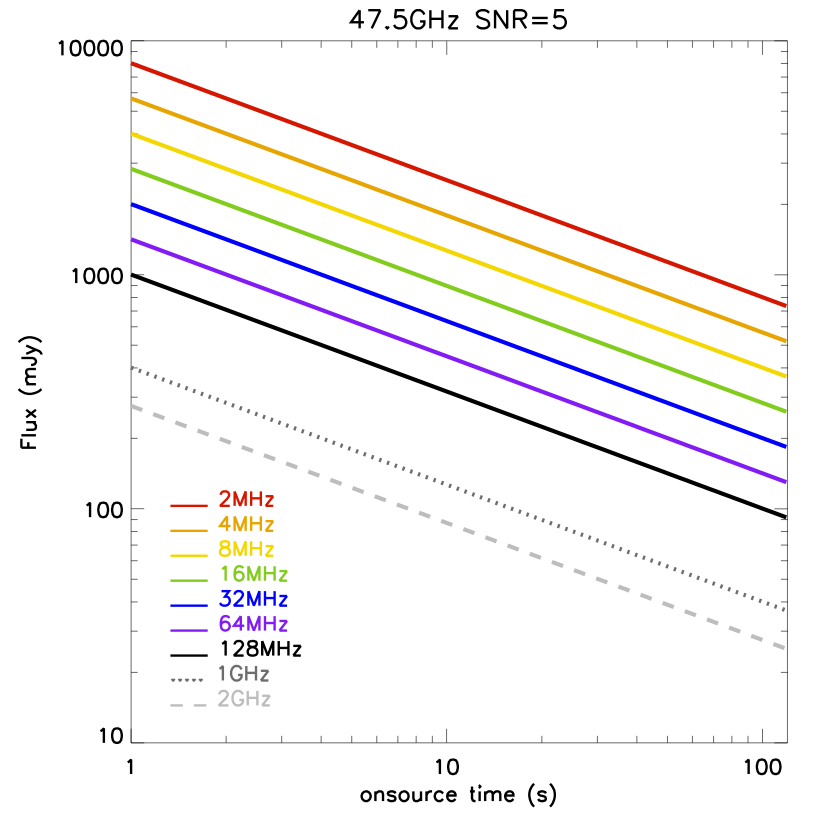General Guidelines for Gain Calibration
Adequate gain calibration is a complicated function of source-calibrator separation, frequency, array scale, and weather. And, since what defines adequate for some experiments is completely inadequate for others, it is difficult to define simple guidelines to ensure adequate phase calibration in general. However, some general statements remain valid most of the time. These are given below.
- Under decent conditions (no thunderstorms or ionospheric storms) tropospheric effects dominate at frequencies higher than about 4 GHz, ionospheric effects dominate at frequencies lower than about 4 GHz.
- Atmospheric (troposphere and ionosphere) effects are nearly always unimportant in the C and D configurations at L and S bands, and in the D configuration at X and C bands. Hence, for these cases, calibration need only be done to track instrumental changes - a couple of times per hour is generally sufficient.
- If your target object has sufficient flux density to permit phase self-calibration, there is no need to calibrate more than once hourly at low frequencies (L/S/C bands) or 15 minutes at high frequencies (K/Ka/Q bands) in order to track pointing or other effects that might influence the amplitude scale. The enhanced sensitivity of the VLA guarantees, for full-band continuum observations, that every field will have enough background sources to enable phase self-calibration at L and S bands. At higher frequencies, the background sky is not sufficient, and only the flux of the target source itself will be available.
- The smaller the source-calibrator angular separation, the better. In deciding between a nearby calibrator with an "S" code in the calibrator database, and a more distant calibrator with a "P" code, the nearby calibrator is usually the better choice. A detailed description of calibrator codes is available in the Key to the calibrator list.
- In clear and calm conditions, most notably in the summer, phase stability often deteriorates dramatically after about 10AM, due to small-scale convective cells set up by solar heating. Observers should consider a more rapid calibration cycle for observations between this time and a couple hours after sundown.
- At high frequencies, and longer configurations, rapid switching between the source and nearby calibrator is often helpful. See Rapid Phase Calibration and the Atmospheric Phase Interferometer (API).
- Use the figure below to estimate how much time is minimally needed for each gain calibrator scan. For instance, a 1 Jy calibrator and 4 MHz total bandwidth requires at least 30 seconds on source

Minimum time required on a gain calibrator scan as a function of bandwidth and calibrator flux for the rather extreme case of upper Q-band. Durations derived from this plot will definitely be sufficient for all other bands.




Connect with NRAO